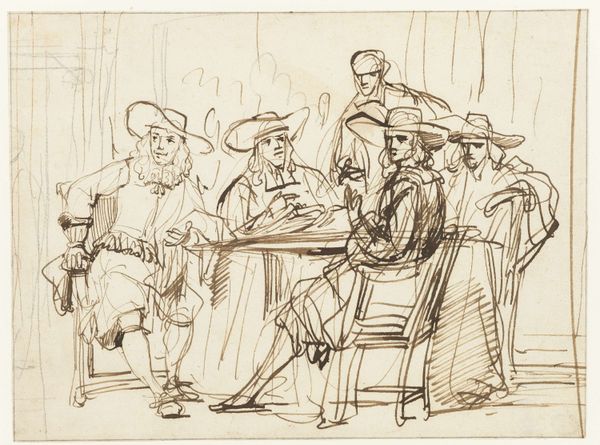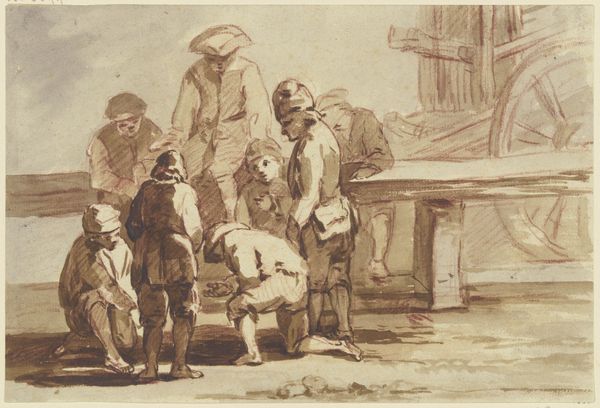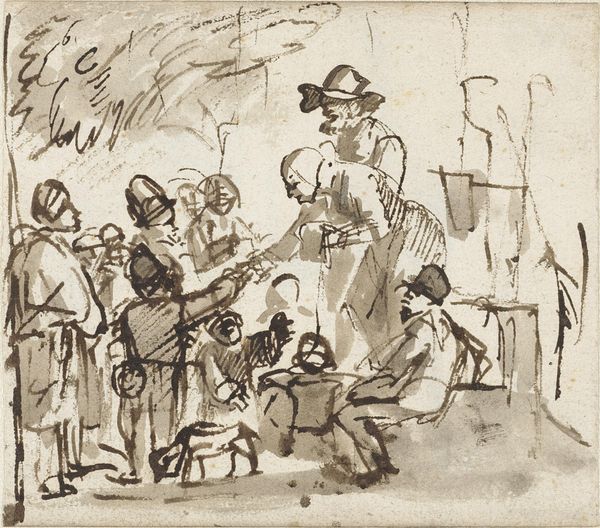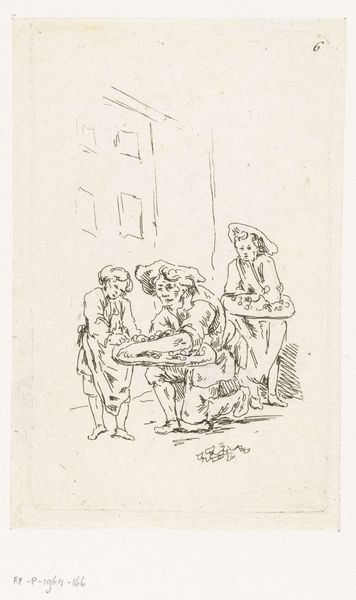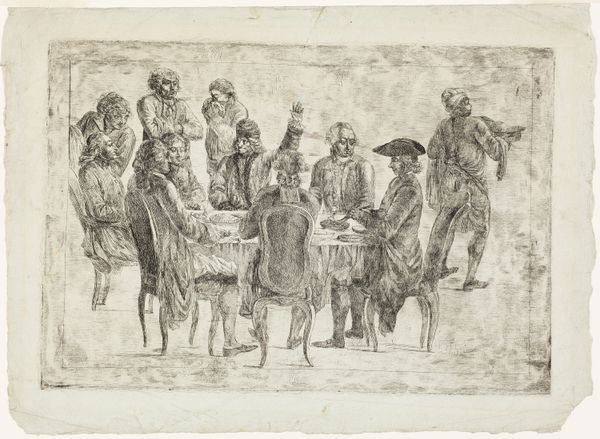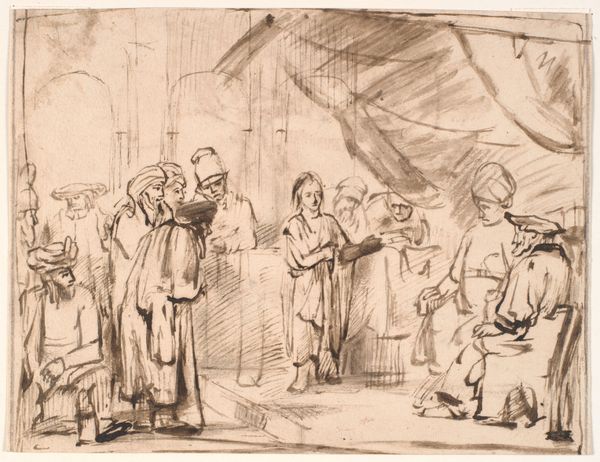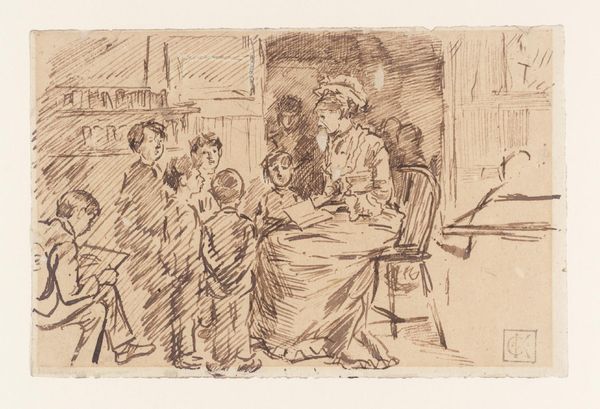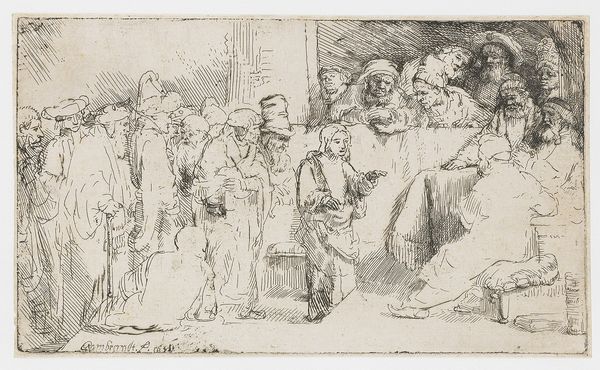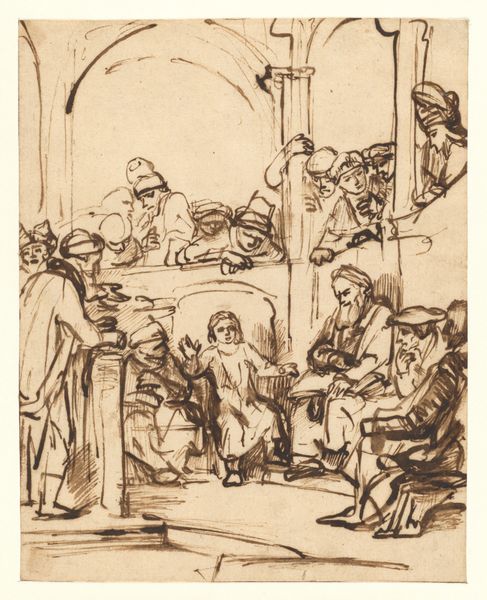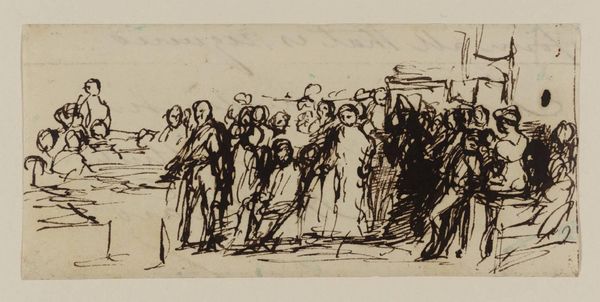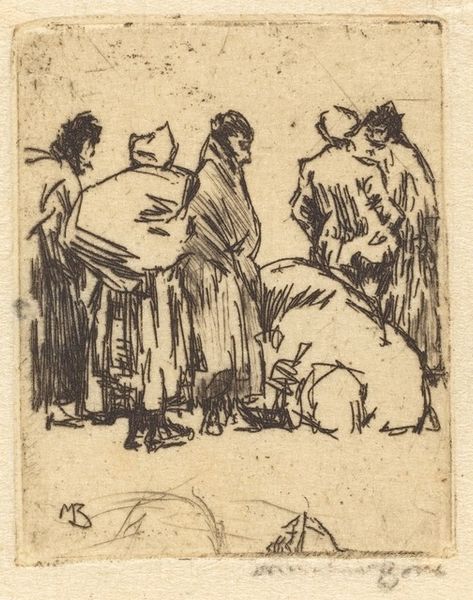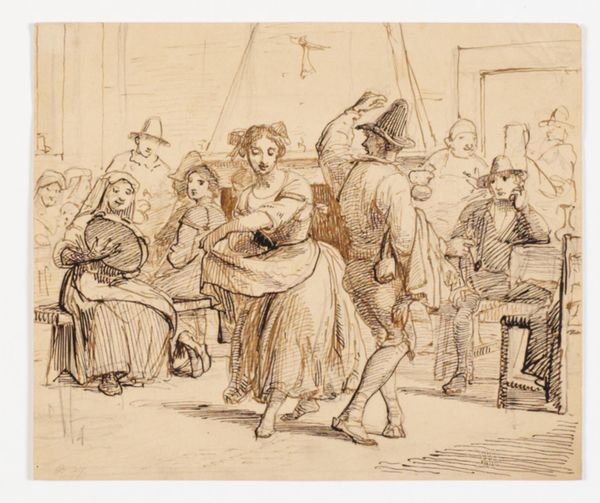
drawing, ink, pen
#
portrait
#
drawing
#
ink drawing
#
figuration
#
ink
#
romanticism
#
pen
#
genre-painting
#
history-painting
Dimensions: 5 7/8 x 7 7/8 in. (14.92 x 20 cm) (sheet)9 3/8 x 11 11/16 in. (23.81 x 29.69 cm) (mount)
Copyright: Public Domain
Curator: Leonardo Alenza's ink drawing, titled "At the Bullfight", circa 1825 to 1845, presents an intriguing study in social observation. What are your initial thoughts? Editor: There’s a somber feel, even claustrophobic. The tight grouping of figures and the stark ink contribute to this, a sense of heavy anticipation almost. Curator: Indeed. Alenza masterfully employs line and shadow to direct our gaze. Note how the dark, dense ink defines the figures' outlines, contrasting with the spare use of ink in the background, creating a layered effect. Editor: I’m struck by how this piece potentially comments on societal participation, or lack thereof. Observe the separation of these people by gender and class; it reveals much about 19th-century Spanish social structures. What are these unspoken boundaries, who can participate and who cannot? Curator: Certainly, the work offers rich insights into social dynamics. However, the artist’s meticulous attention to detail, in the rendering of garments, for example, creates its own dynamic. The very act of representing these details becomes a significant part of the artwork. Editor: That very 'act' underscores its ideological project. I view their rendered clothes less as aesthetic admiration, but rather material indicators of societal roles, even constraints imposed during this era. Curator: While acknowledging Alenza's sociopolitical awareness, I also appreciate his formal ingenuity within drawing. He uses hatching and cross-hatching with great dexterity to modulate tone and imply depth. Editor: I agree. These structural considerations should not obscure broader societal implications, especially concerning representation and social order. By depicting this group within the charged atmosphere of a bullfight, he compels us to examine cultural dynamics and power. Curator: Well, these contrasting perspectives underscore the lasting importance of analyzing artworks with multiple tools, revealing depth within the details and inspiring fresh conversations about representation. Editor: Precisely, encouraging us to continuously ask new and critically-conscious questions!
Comments
No comments
Be the first to comment and join the conversation on the ultimate creative platform.
